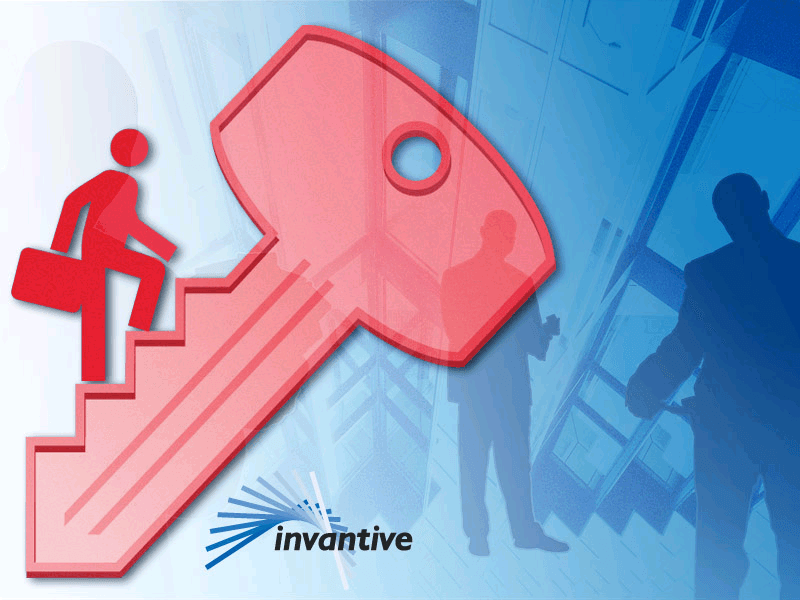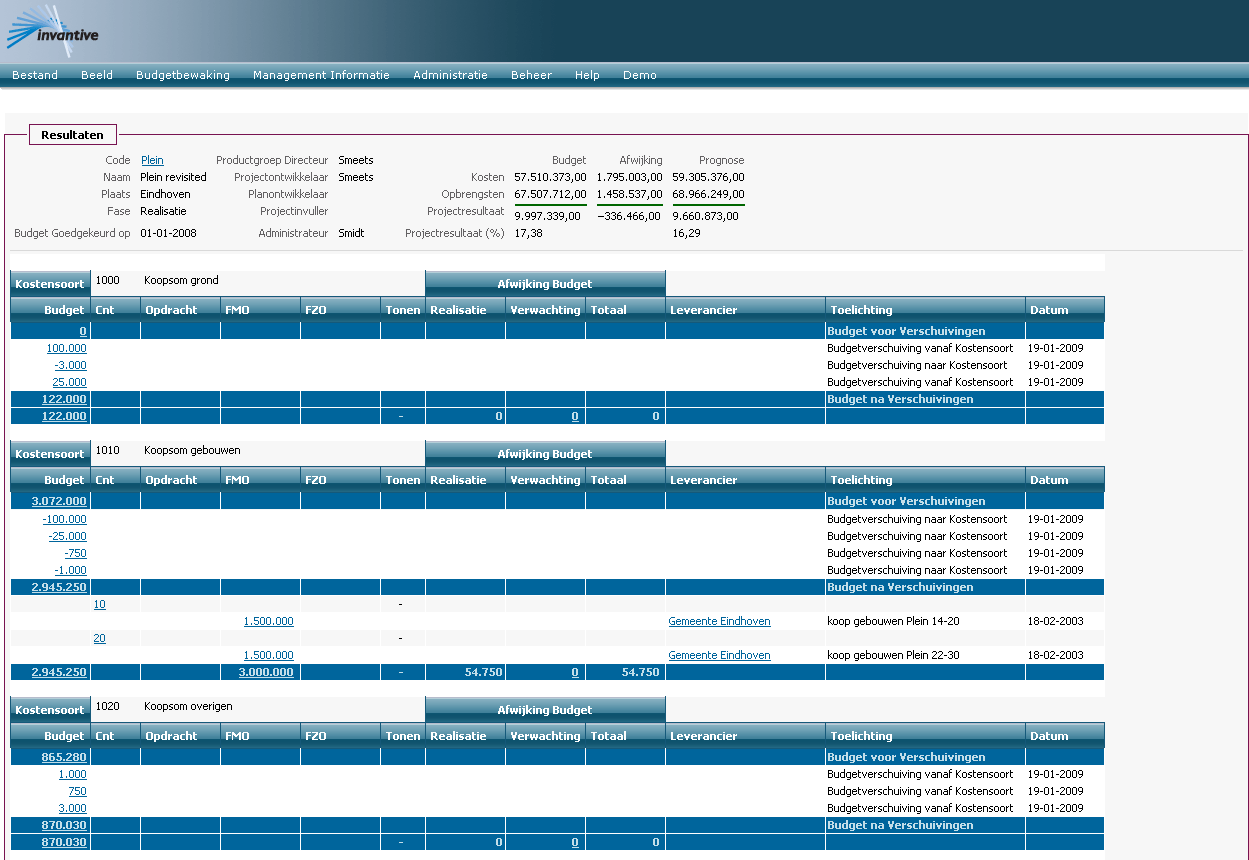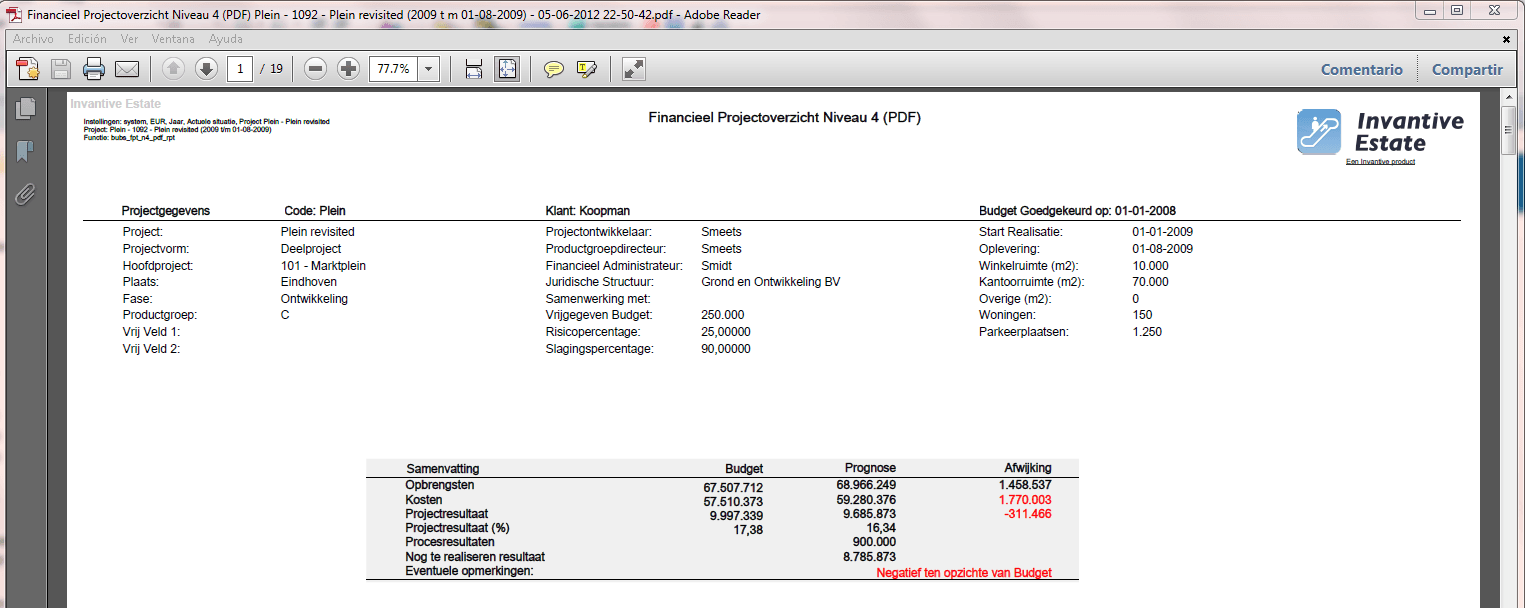
Welcome to the Invantive Estate manual, Invantive Estate is a project management solution for projects of real estate companies. Invantive Software BV is also supplier of the product Invantive Vision. Invantive Vision is a project management solution especially suitable for architects, IT companies and service providers in secondment and consultancy.
Project development is a risky service. It consists of the development of real estate, in the form of terrains, building or other types of real estate, such as parking areas. Real estate development is an activity that can be performed in several ways:
•The development of a project is done within an legal entity, specifically established for this purpose. Several parties can work together within this entity on a basis of a contractual agreement. The entity has no other relevant activities or assets except the development of real estate project. Project development which makes use of a specialized legal entity has several benefits for the involved parties as there are clear agreements on cooperation, there's little risk to the interdependence of work on the project with other types of work within the mother companies and finally it forms a safety net for any financial debacle within the project as the negative consequences typically only have a legal impact on the unit itself. The financial risks for investors usually are limited to their input in the new legal entity. Such legal units are often to be recognized by the name which specifically refers to the to be executed project.
•The development of projects is the core activity of the legal unit. Within this legal unit several projects are executed simultaneously, with each project in its own stage and degree of completion. The financial investment happens for instance by acquiring resources from the capital market, from own resources or from a combination of both. Real estate developers such as ING Real Estate and AM belong to this category.
•The development of projects is not the core activity of the legal entity, but is according to the accounting rules a profit center within the organization. This form is usually seen at large construction companies which also acquire land and realize projects as part of their business and at their own risk.
Projects are known for the long period of time (up to twenty years) and the large investments involved. In order to safeguard the budget and to control risks in these difficult processes Invantive Estate has been developed. By making risks, budgetary deficits and insufficient cash flow earlier visible, the process can be steered in an earlier stage. In this way the project developer will try to minimize the budgetary deficits and turn budgetary excesses into a higher quality.
Invantive Estate has the following general characteristics:
•With your financial administrations as a base, Invantive Estate registers the realization from the general ledger per project and cost category.
•Invantive Estate provides reports for several management levels from which cost categories can be rolled up into bigger groups.
•Documents and tasks can be attached to financial records so that an integrated project file is created.
•Invantive Estate has a flexible security model with which you can for instance give project managers read and/or write access to solely their own projects.
•Unexpected incidents in the information security can be traced, based on an extensive audit trail.
•Reports are available in Adobe PDF format for optimal layout and distribution, and in Microsoft Excel format for analysis.
•Historical situations are easily accessible through the new timeline feature.
•Projects can be closed after which no changes are possible anymore.
The typical life cycle of a project includes the following phases:
•Acquisition of land according to the desired destination.
•Determining the revenues and costs of a project in the form of exposé or a total investment plan.
•The exposé specifies the budgets per cost category, if necessary detailed per contractual agreement, as shown in the below example:

After the exposé is approved the project will be started:
During the development and realization the financial administration records the actual numbers. The registration of the project results can take place by means of an automated interface or by manual input:

In addition, recent estimates, sales orders and sales are registered before they have led to an actual financial result. The next screen shows an example:

Based on this data, a risk model (standard or organization specific) calculates a forecast as a deviation from the project budget. The deviation makes visible what the project's actual financial status and risks are, in comparison to the expose; exceedings are immediately shown, surpluses can be implemented elsewhere in order to compensate deficits:

With reference to the forecast a cash flow projection can be composed which also leads to a net current value calculation.
Extensive reports and possibilities to click on headlines to see details make it possible to analyse unexpected results:

During the project, possible administrative profits are registered based on the calculated status and the implemented value base such as IFRS.
Finally, after the project results are delivered the project is archived, after which you cannot change anything anymore.
In the next chapters the following topics are discussed:
•User interface: how to control the application
•All Form and Reports.
•The MS Outlook User Interface.
•Your Private User Interface.
•Processes within Invantive Estate.
•Server.
•The Installation.
•Versions.
•Glossary .
•Frequently asked questions: what procedures do you have to follow to rightfully handle practical examples?
 Invantive Estate
Invantive Estate